Study on the Surface Coating Techniques of Furniture in the Long’en Hall of Qing Changling Mausoleum
Abstract
1. Introduction
2. Materials and Methods
2.1. Material Source
2.2. Test Methods
3. Results and Discussion
3.1. Cross-Sectional Observation and Analysis with a Fluorescence Stereomicroscope
3.2. Elemental Analysis of Sample Cross-Sections by SEM-EDS
3.3. XPS Analysis of Surface Elements
3.4. FTIR Analysis
3.4.1. FTIR Analysis of the Lacquer Ash Layer
3.4.2. FTIR Analysis of Surface Lacquer Layers
4. Discussion
- (1)
- Layered Structure and Composite Material Characteristics of Lacquer Finishes on Long’en Hall Furnishings
- (2)
- Multi-Technique Cross-Validation Enhances the Scientific Rigor and Reliability of the Cultural Relics’ Protection and Imitation Technology Pathway
- (3)
- Correlation Between Experimental Findings and Historical Records Reflects Process Standardization
- (4)
- Technical Limitations and Practical Recommendations
5. Conclusions
Author Contributions
Funding
Institutional Review Board Statement
Informed Consent Statement
Data Availability Statement
Acknowledgments
Conflicts of Interest
References
- Yang, Y. Research on Long-Entemple in Mausoleums of Qing Dynasty. Master’s Thesis, Tianjin University, Tianjin, China, 2019. [Google Scholar] [CrossRef]
- Liu, Y. Qin Ding Siku Quanshu Huayao Qin Ding Da Qing Huidian 2; Jilin Publishing Group Limited Liability Company: Changchun, China, 2005; ISBN 7-80720-059-6. [Google Scholar]
- Palace Museum. The Two Rules and Regulations of the Ministry of Rites; Hainan Publishing House: Haikou, China, 2000; Volume 4, ISBN 7-80645-666-X. [Google Scholar]
- Fu, P.; Teri, G.L.; Li, J.; Li, J.-X.; Li, Y.-H.; Yang, H. Investigation of Ancient Architectural Painting from the Taidong Tomb in the Western Qing Tombs, Hebei, China. Coatings 2020, 10, 688. [Google Scholar] [CrossRef]
- Qin, Y.L.; Zhu, Z.Y.; Zhu, Y.; Schilling, M.; He, J.; Zhang, L.; Chen, T.; Zhou, P. Exploring this in Qing Dynasty lacquerware: Insights from a preliminary study. Herit. Sci. 2025, 13, 46. [Google Scholar] [CrossRef]
- Zhang, T.X.; Wu, Z.H.; Sun, T. Analyzing the Influence of the Ground Layer on Reinforcement Strength of Lacquer Film in the Restoration of Ancient Chinese Lacquer Furniture. Bioresources 2019, 14, 431–439. [Google Scholar] [CrossRef]
- Huang, C. Hand-Painted Color Illustrated Vernacular Translation of the Painting Book; Chongqing Publishing House: Chongqing, China, 2022; ISBN 978-7-229-16863-6. [Google Scholar]
- Khanjian, H.; Park, J.; Schilling, M.; Lee, J. Stratigraphic Examination of a Korean Lacquered Wooden Coffin Sample by Pyrolysis/GC/MS. Chromatographia 2018, 81, 1685–1694. [Google Scholar] [CrossRef]
- Teri, G.; Fu, P.; Han, K.Z.; Li, J.; Li, Y.; Jia, Z.; Wang, Y.; Li, Y. Color Paintings of Taiping Heavenly Kingdom Royal Residence: An Analytical Study. Coatings 2022, 12, 1880. [Google Scholar] [CrossRef]
- Guo, Z.Y.; Zhu, Z.Y.; Qin, Y.L.; Li, J.; Li, Y.; Jia, Z.; Wang, Y.; Li, Y. Shedding new light on lacquering crafts from the Northern Wei Dynasty (386–534 CE) by revisiting the lacquer screen from Sima Jinlong’s Tomb. J. Cult. Herit. 2025, 71, 309–319. [Google Scholar] [CrossRef]
- Lee, J.; Kim, M.J.; Kim, M.H.; Doh, J.M.; Hahn, H.-G.; Lee, Y. Characterization of traditional Korean lacquers using surface analytical techniques, such as surface. Interface Anal. 2015, 47, 1180–1186. [Google Scholar] [CrossRef]
- Luo, M.; Bo, P.; Shao, Y.; Liu, Z.M.; Xu, D.; Ma, L. Study on the Influence of Electron Beam Radiation Sterilization Method on Chinese Mural Pigment. Processes 2023, 11, 1403. [Google Scholar] [CrossRef]
- de Gregorio, I.L.; Marras, S.; Garcia, A.R. Characterization of a Qing Dynasty Folding Fan for Exportation. J. Am. Inst. Conserv. 2025. [Google Scholar] [CrossRef]
- Wang, K.; Liu, C.W.; Zhou, Y.H.; Hu, D. pH-dependent warping behaviors of ancient lacquer films excavated in Shanxi, China. Herit. Sci. 2022, 10, 31. [Google Scholar] [CrossRef]
- Ridassepri, A.F.; Rahmawati, F.; Amalia, A.F.; Nakamura, J.; Lee, Y. A Functional N/S-doped Carbon Electrode from a Carbonized Bagasse Activated with Water Vapor. J. Electrochem. Sci. 2024, 15, 466–475. [Google Scholar] [CrossRef]
- Britto-Hurtado, R.; Larios-Rodriguez, E.; Ramirez-Bon, R.; Rodríguez, L.P.R.; Reynoso, T.M.; Acosta, M.F. Pb/Pb3O4 Metal-Semiconductor Nanocomposite Obtained on 4A Zeolite-Optical and Structural Properties. ACS Omega 2024, 9, 7737–7745. [Google Scholar] [CrossRef]
- W., S.X. Regulations on Craftsmanship in the Qing Dynasty; Elephant Publishing House: Zhengzhou, China, 2000; ISBN 7-5347-2396-5. [Google Scholar]
- Zheng, L.P.; Wang, L.Q.; Zhao, X.; Yang, J.; Zhang, M.; Wang, Y. Characterization of the materials and techniques of a birthday inscribed lacquer plaque of the Qing dynasty. Herit. Sci. 2020, 8, 116. [Google Scholar] [CrossRef]
- Buruiana, A.T.; Zaki, M.Y.; Sava, F.; Velea, A.; Marin, M.; Ispas, E.; Petre, A.L.R.; Simion, C.A.; Luca, A. Efflorescent compounds—Characterization and interactions with lithic material. Insights from the exterior wall of the episcopal cathedral—Curtea de arges. Rom. Rep. Phys. 2024, 76, 803. [Google Scholar] [CrossRef]
- Gieparda, W.; Przybylak, M.; Rojewski, S.; Doczekalska, B. Polysiloxanes and Silanes with Various Functional Groups-New Compounds for Flax Fibers’ Modification. Materials 2023, 16, 3839. [Google Scholar] [CrossRef]
- Mangestiyono, W.; Sutrisno; Mrihardjono, J. Investigation Ion Molecule Interaction of CaCO3 Scaling Process on Shell and Tube Heat Exchanger by FTIR Spectroscopy. Adv. Sci. Lett. 2019, 24, 9872–9874. [Google Scholar] [CrossRef]
- Simsek, O.; Özbas, F.; Kaygisiz, E.; Yaşayan, G.; Ildiz, G.Ö. Multianalytical characterization of Byzantine wall paintings by SEM-EDX, μ-XRD, Raman, and FTIR techniques. Turk. J. Earth Sci. 2025, 34, 246–262. [Google Scholar] [CrossRef]
- Invernizzi, C.; Rovetta, T.; Licchelli, M.; Malagodi, M. Mid and Near-Infrared Reflection Spectral Database of Natural Organic Materials in the Cultural Heritage Field. Int. J. Anal. Chem. 2018, 2018, 7823248. [Google Scholar] [CrossRef]
- Liu, W.J.; Liu, X.Y.; Lv, J.F. Comparative Study on UV Degradation of Black Chinese Lacquers with Different Additives. Materials 2023, 16, 5607. [Google Scholar] [CrossRef]
- Xiao, Q.; Wei, S.Y.; Fu, Y.C. Feasibility Study on Quantitative Analysis of Ancient Lacquer Films by Infrared Spectroscopy. Spectrosc. Spectr. Anal. 2020, 40, 2962–2967. [Google Scholar] [CrossRef]
- Cornell, R.M.; Schwertmann, U. The Iron Oxides: Structure, Properties, Reactions, Occurrences and Uses; Wiley-VCH: Weinheim, Germany, 2003; pp. 139–183. ISBN 9783527302743. [Google Scholar]
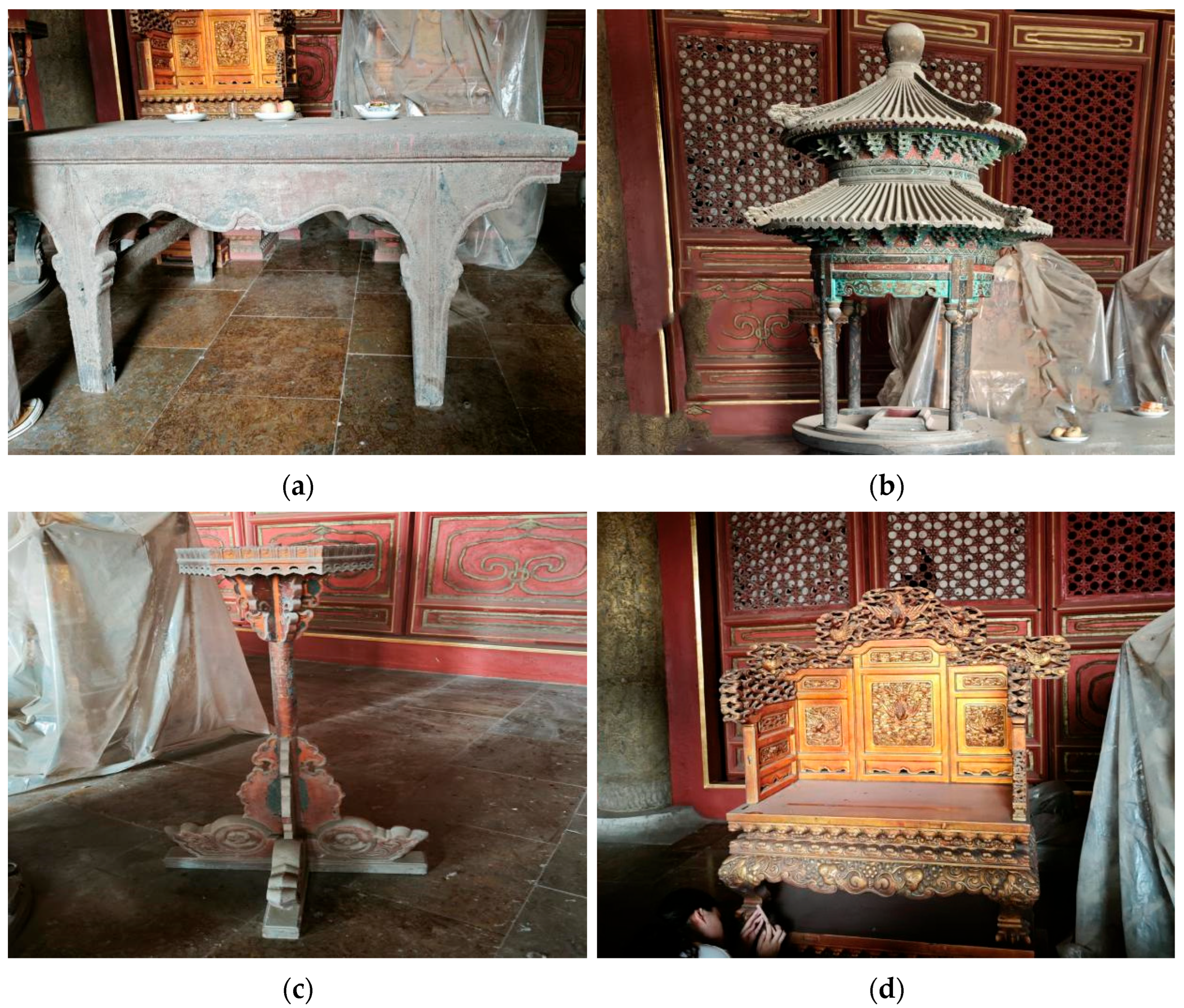
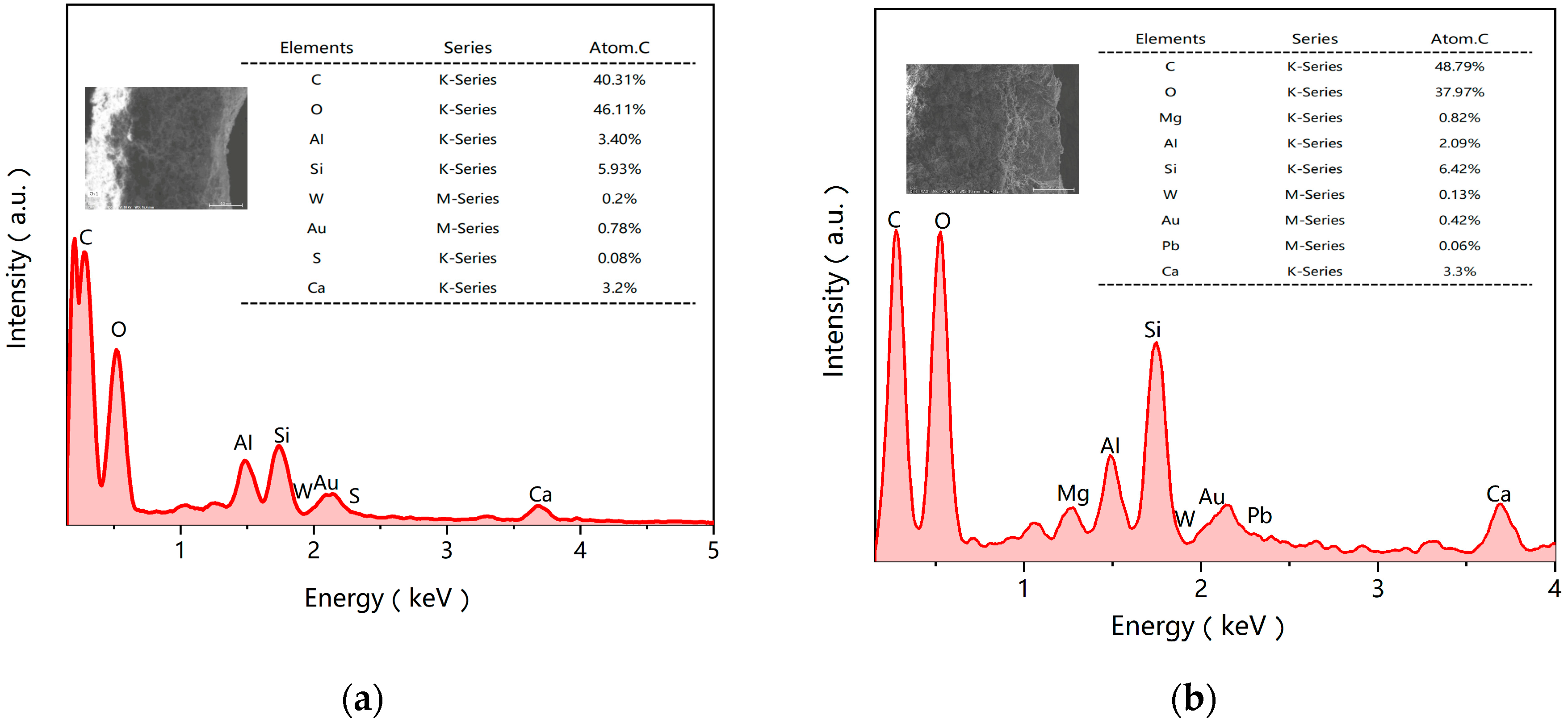

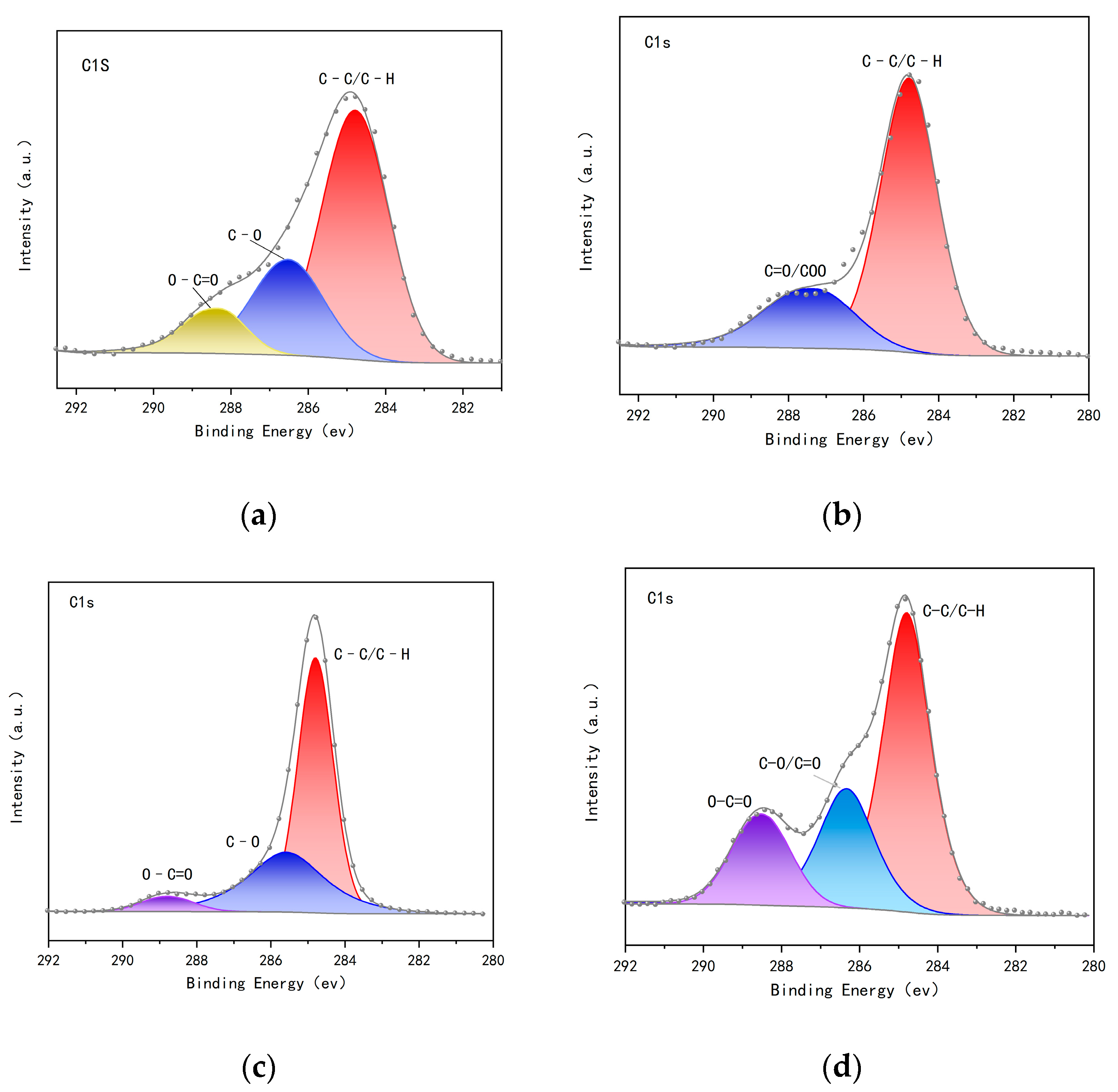
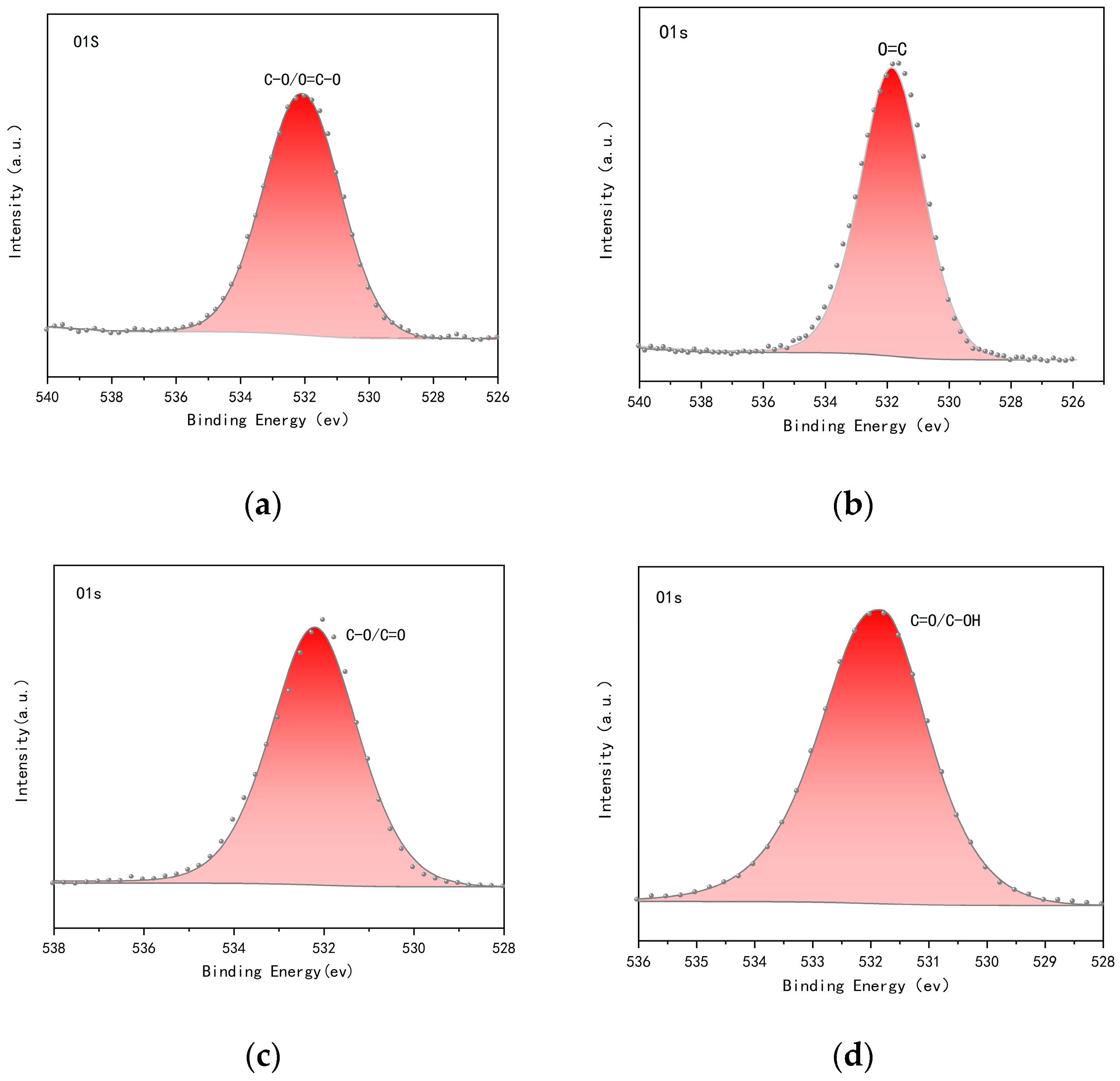

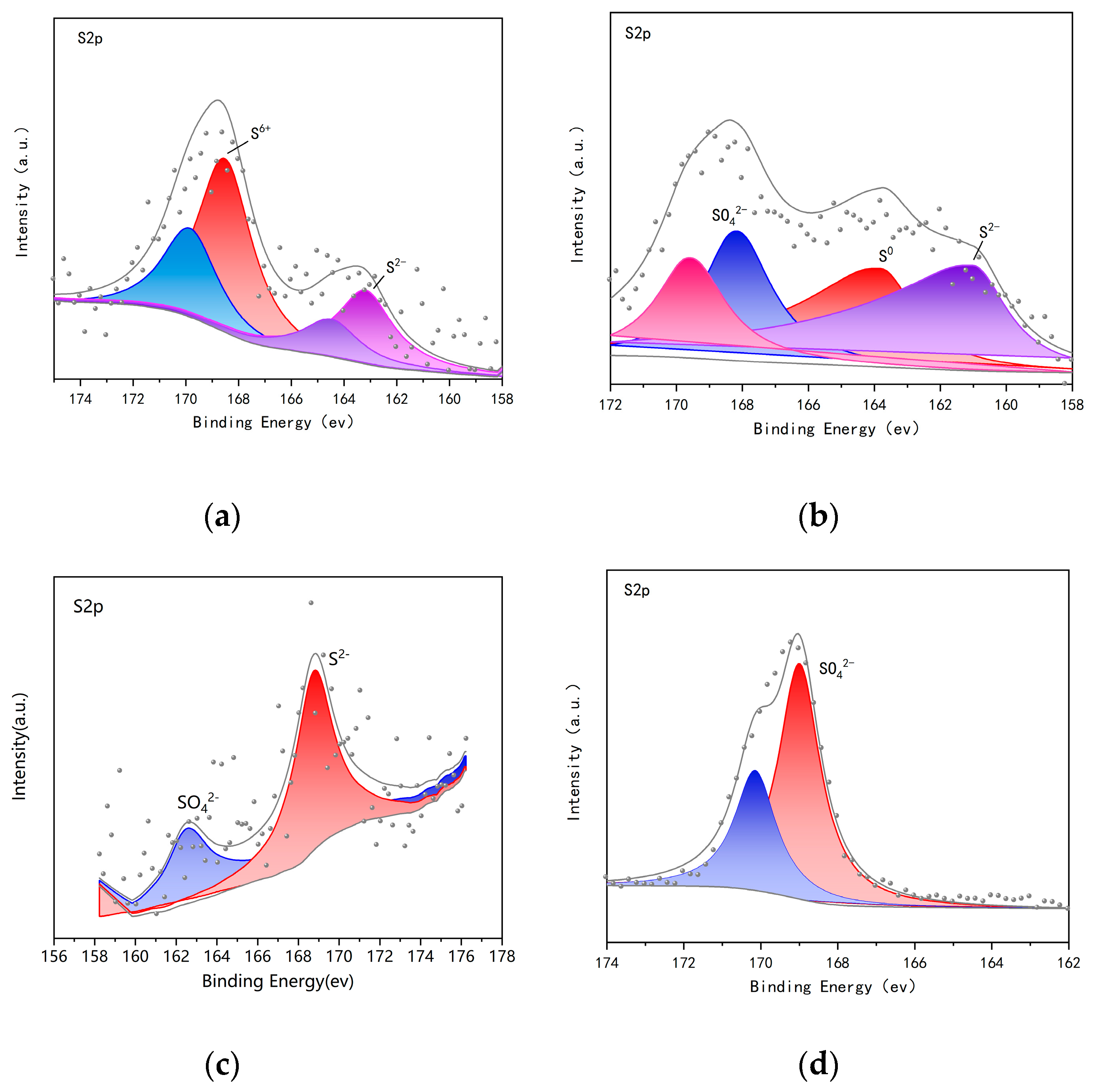
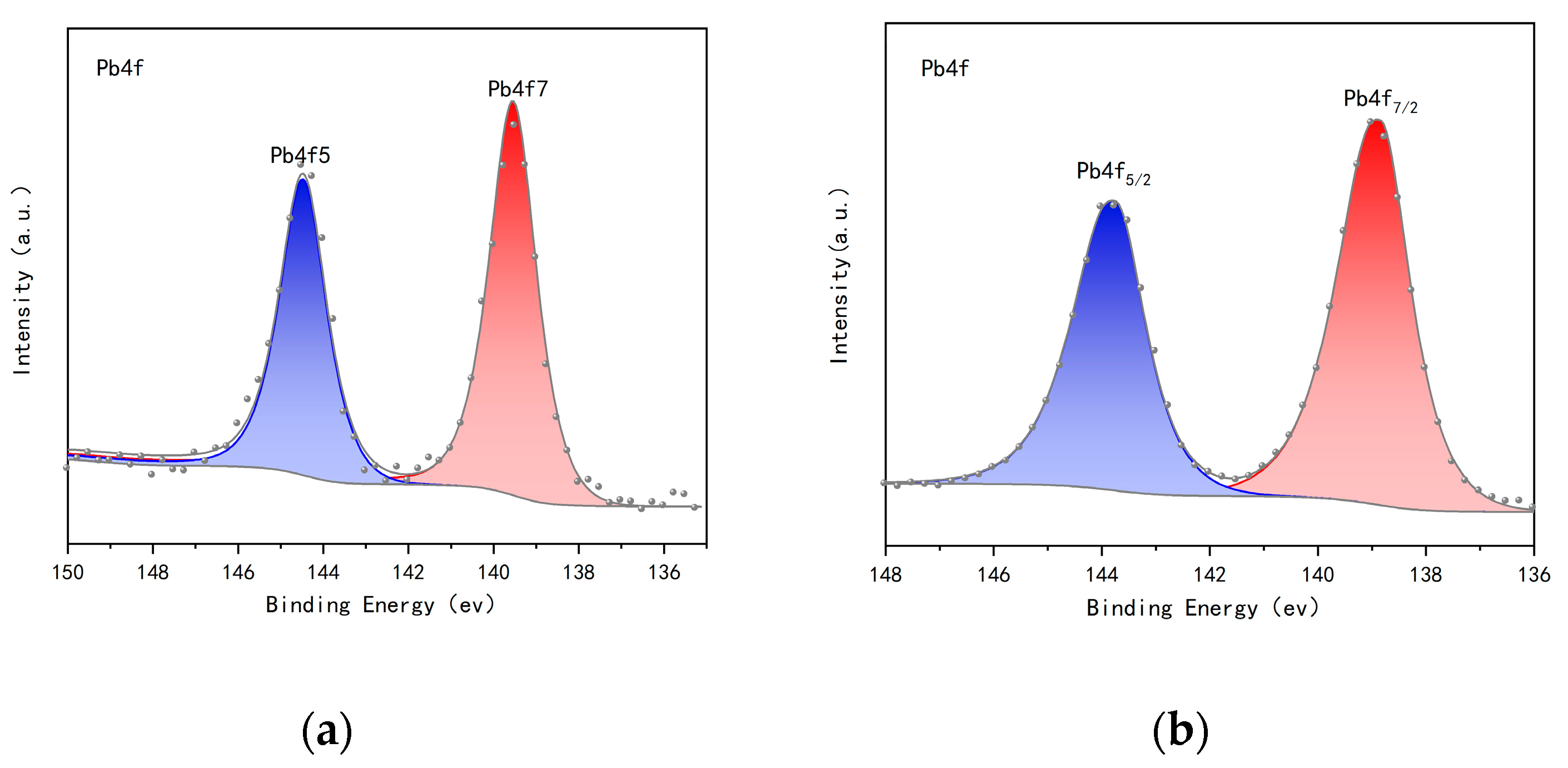
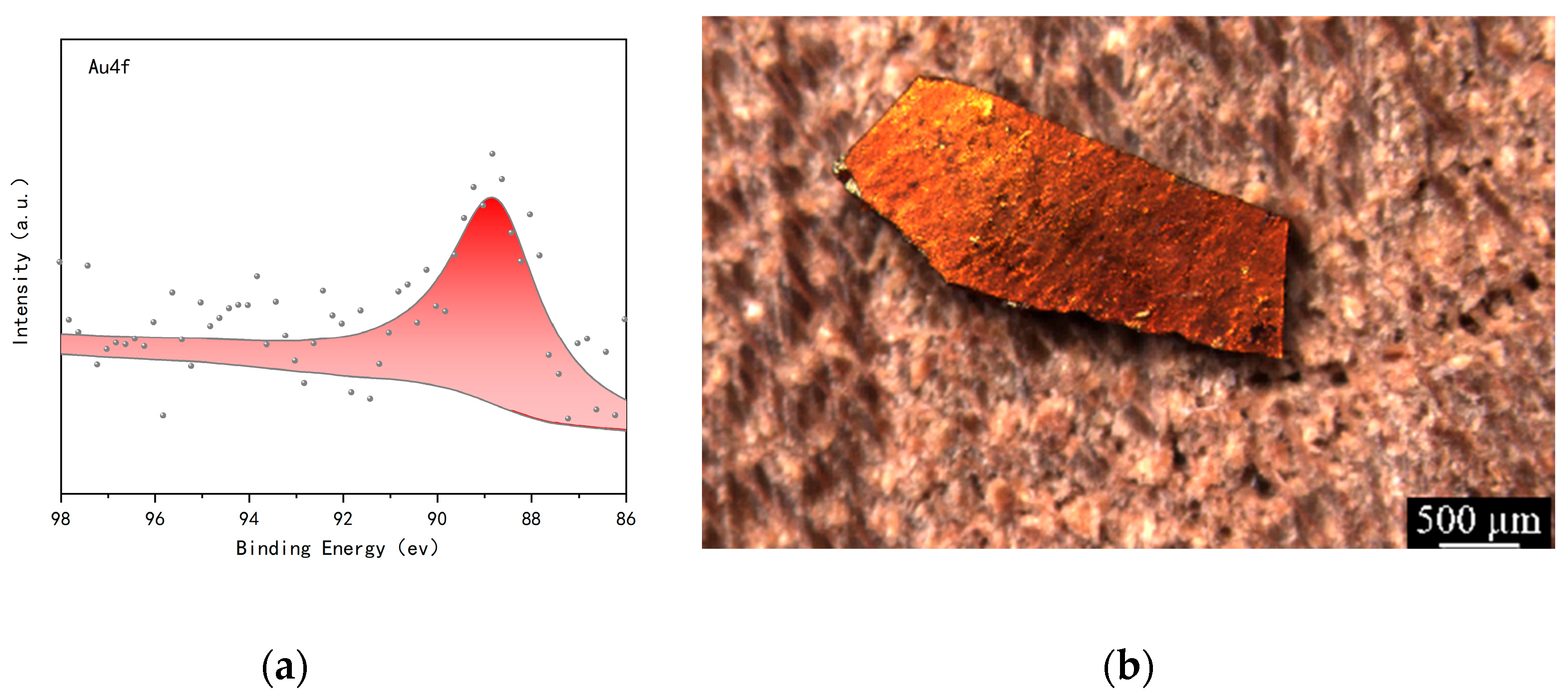


| Furniture Name | Sampling Location | Sampling Method | Pre-Sampling Photo | Post-Sampling Photo | Visible Color |
|---|---|---|---|---|---|
| Offering Table | Tabletop of the offering table | Scraping of the cracked lacquer layer | 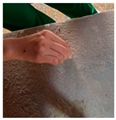 |  | Reddish-gray surface; semi-transparent waxed surface on top |
| Offering Table | the underside of the right horizontal brace | Scraping of the cracked lacquer layer |  | 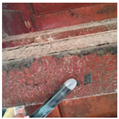 | Red |
| Incense Pavilion | the upper interior of the incense pavilion | Collection of the fallen lacquer layer |  |  | Red |
| Torch Lantern | Tenon block for positioning the lamp peg | Scraping of the cracked lacquer layer |  | 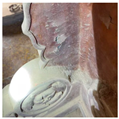 | Reddish-gray |
| Gilded Throne | Rear right section of the throne | Scraping of the cracked lacquer layer | 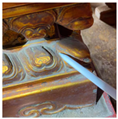 | 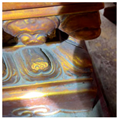 | Bright golden |
| Gilded Throne | Lower right Badama area of the throne | Scraping of the cracked lacquer layer |  |  | Bright golden |
| Testing Order | Instrument Name | Brand/Model | Main Application | Technical Specifications and Testing Conditions |
|---|---|---|---|---|
| 1 | Stereo Fluorescence Microscope | Leica M205FA (Leica Microsystems, Wetzlar, Germany) | Microscopic observation of the sample surface and cross-section | Fully apochromatic optical system; zoom ratio of 20.5:1; magnification range 7.8×–160×, configurable up to 1280×; large depth-of-field structure visualization |
| 2 | SEM-EDS | Regulus8100 (Hitachi, Tokyo, Japan) | Elemental composition analysis of sample cross-sections | EDS detection range: Be to Am; energy resolution better than 129 eV for Mn Kα (at 100,000 CPS); 57 eV for C-K and 67 eV for F-K; supports elemental mapping, line scanning, and area distribution analyses |
| 3 | X-ray Photoelectron Spectrometer (XPS) | K-Alpha (Thermo Fisher Scientific, Waltham, MA, USA) | Non-destructive analysis of surface elemental composition and chemical states | Al Kα monochromatic X-ray source (1486.6 eV); max power: 72 W; vacuum better than 2 × 10−7 Pa; spot size: 400 μm (in area analysis mode); pass energy: 50 eV (elemental scan) and 20 eV (high-resolution scan); step size: 0.1 eV; charge compensation using dual-source low-energy electron and Ar+ ion |
| 4 | Fourier-Transform Infrared (FTIR) Spectrometer | Nicolet iS10 (Thermo Fisher Scientific, USA) | Analysis of organic/inorganic components of lacquer ash layer and surface lacquer layer | Mid-infrared range: 400–4000 cm−1; 32 scans; resolution: 4 cm−1; non-destructive testing |
| Sample Source | Upper Lacquer Layer Color and Thickness | Characteristics of Lacquer Ash Layer | Sample Cross-Section |
|---|---|---|---|
| Offering Table | Red lacquer (~70 μm) + dark red lacquer (~125 μm) | No distinct stratification; the lower layer was rough and contained mineral particles | 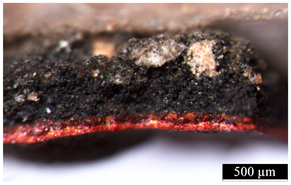 |
| Incense Pavilion | Red lacquer layer (~80 μm) | Two sublayers: yellow (fine texture, ~350 μm) and gray (slightly coarse) | 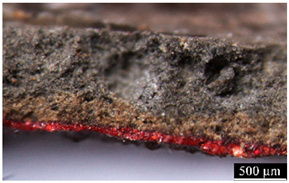 |
| Torch Lantern | Red lacquer layer (~150 μm) | Similar to the incense pavilion, with a yellowish-brown and gray dual-layer structure |  |
| Throne (Lower Rear Right, Badama Area) | Black lacquer layer (~250 μm) + underlying red lacquer | No obvious lacquer ash layer |  |
| Lower Right Side Of The Throne | Black lacquer layer (~90 μm) + underlying red lacquer | No obvious lacquer ash layer | 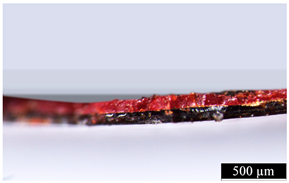 |
| Absorption Peak Position (cm−1) | Corresponding Chemical Bond/Group | Characteristics of Lacquer Ash Layer |
|---|---|---|
| 3544.52; 3396.03 | O–H and N–H stretching vibrations | Records of Paint Decoration; animal glue |
| 1644.98; 1522.42 | N–H bending; C=O stretching | |
| 2921.63; 2852.20 | C–H stretching vibrations | |
| 1114.65; 1002.80 | C–O stretching vibrations | Records of Paint Decoration; lacquer ash process |
| 1417.42; 1319.07 | Carboxylate/carbonate | |
| 676.41; 470.32 | Si–O and Al–O bending vibrations | Records of Paint Decoration; section on color and texture |
| Absorption Peak Position (cm−1) | Corresponding Chemical Bond/Group | Characteristics of Lacquer Ash Layer |
|---|---|---|
| 3289.96 | O–H/N–H stretching vibrations | Proteinaceous substances (e.g., animal glue) |
| 1649.98; 1540.85 | Amide I and amide II vibrations | Protein structures |
| 2923.56; 2854.13 | Aliphatic C–H stretching vibrations | Drying oil (e.g., tung oil) or natural lacquer matrix |
| 1704.77 | C=O carbonyl vibration | Quinone or ester structures (oxidative products of lacquer) |
| 1405.85; 1319.07 | Aromatic ring skeletal vibrations | Laccol polymerization products |
| 400–580 | Inorganic lattice vibrations | Inorganic red pigment Pb (Pb3O4) |
Disclaimer/Publisher’s Note: The statements, opinions and data contained in all publications are solely those of the individual author(s) and contributor(s) and not of MDPI and/or the editor(s). MDPI and/or the editor(s) disclaim responsibility for any injury to people or property resulting from any ideas, methods, instructions or products referred to in the content. |
© 2025 by the authors. Licensee MDPI, Basel, Switzerland. This article is an open access article distributed under the terms and conditions of the Creative Commons Attribution (CC BY) license (https://creativecommons.org/licenses/by/4.0/).
Share and Cite
Li, Q.; Zhang, F.; Jia, W.; Guo, Y. Study on the Surface Coating Techniques of Furniture in the Long’en Hall of Qing Changling Mausoleum. Coatings 2025, 15, 712. https://doi.org/10.3390/coatings15060712
Li Q, Zhang F, Jia W, Guo Y. Study on the Surface Coating Techniques of Furniture in the Long’en Hall of Qing Changling Mausoleum. Coatings. 2025; 15(6):712. https://doi.org/10.3390/coatings15060712
Chicago/Turabian StyleLi, Qirong, Fan Zhang, Wei Jia, and Yifan Guo. 2025. "Study on the Surface Coating Techniques of Furniture in the Long’en Hall of Qing Changling Mausoleum" Coatings 15, no. 6: 712. https://doi.org/10.3390/coatings15060712
APA StyleLi, Q., Zhang, F., Jia, W., & Guo, Y. (2025). Study on the Surface Coating Techniques of Furniture in the Long’en Hall of Qing Changling Mausoleum. Coatings, 15(6), 712. https://doi.org/10.3390/coatings15060712







